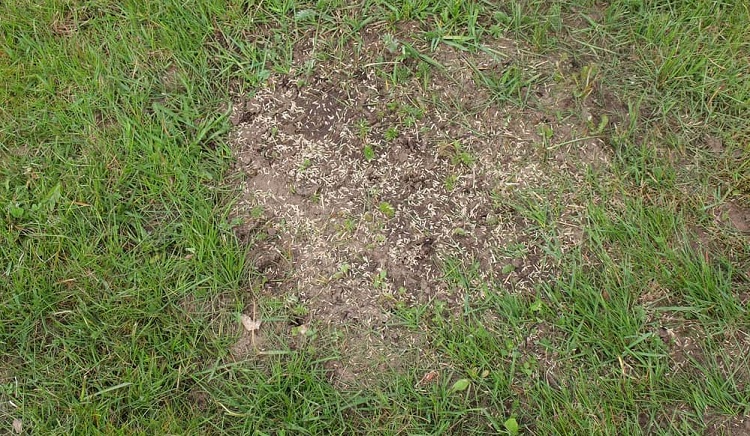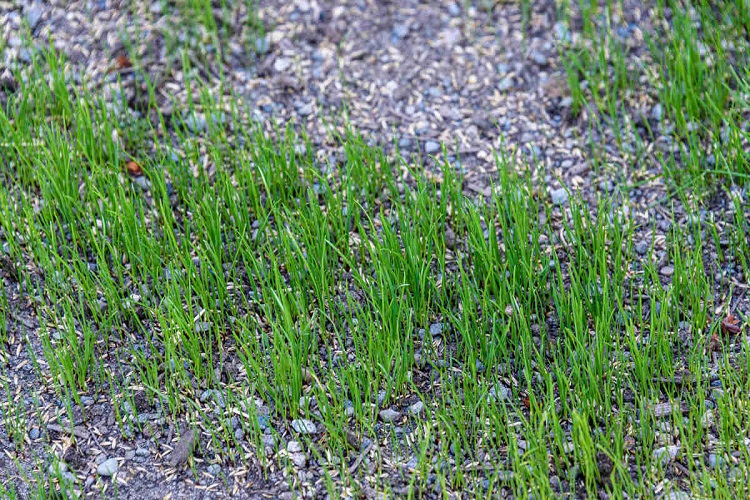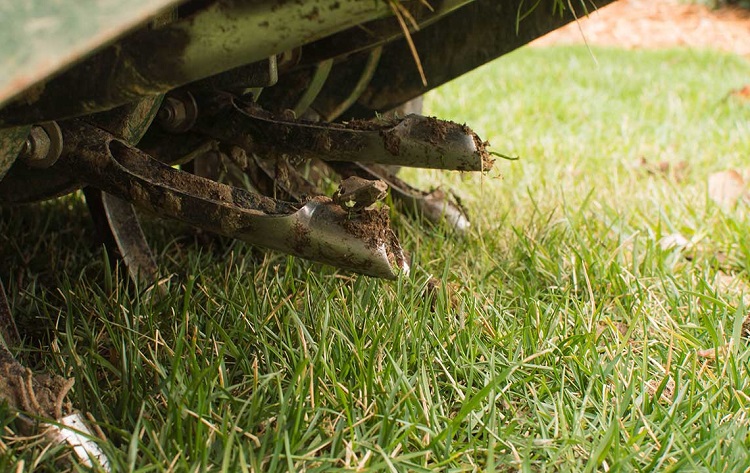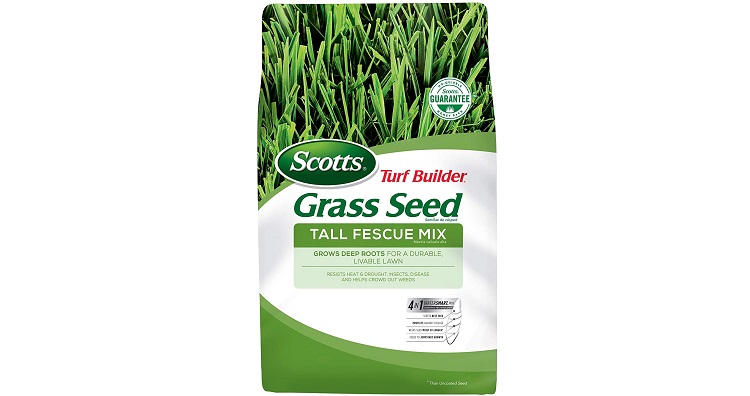- Best Cultivator Attachments Guide - December 23, 2021
- How to Find the Best Leaf Blower Attachment - December 23, 2021
- Best 21 Inch Lawn Mower Blade Options - December 18, 2021
If you’re looking to revitalize your garden and give it a whole new lease of life, then overseeding might be the best option. Overseeding is a good way to replace patches on your lawn where there isn’t grass.
Many benefits come from overseeding, and in this article, I’ll be covering those benefits as well as:
- How to prepare to overseed
- How to overseed
- How to care for the grass
- When you should overseed your lawn
So if you’re interested to learn about the Best Time to Overseed Lawn in Northeast, I beg you to read further.
What is Overseeding
Overseeding is the act of sowing new seeds into your lawn. This can help revitalize a dying lawn and give it a beautiful makeover. Many professionals use it, and it’s the best way of giving your yard a new lease of life.
It takes a lot of time and effort to overseed a lawn, and chemical alternatives are available. However, using chemicals is not great for the environment, and you’ll get much better results overseeding your lawn.
Benefits of Overseeding

The benefits that come from overseeding are:
- Your grass will be more durable against drought and shade conditions.
- The grass will have more prominent colors that will brighten up your yard.
- Your grass won’t be inviting to pests, diseases, and weeds. It’s unlikely your grass will suffer from any of.
- Finally, your grass will be thickened, making it more resistant to heavy foot traffic and stress.
Before Overseeding
Before you overseed your lawn, there are a few things to think about:
- Be sure you have the time to overseed your lawn
- Make sure you have a good aeration tool
- Your lawn should be free of weeds and pests. We have an article on getting rid of weeds which might help.
- You need to have the time to keep it healthy during the germination period
If you’re using older seeds, you need to ensure the seeds you’re planning to plant are usable. Depending on the type of conditions they were kept in and for how long, they might not be usable anymore.
How to Overseed Your Lawn

Overseeding your lawn takes a lot of work, but in return for all that work, you’ll have a beautiful-looking lawn. Be sure you have the right tools and the time before you undertake this task.
Mowing
The first step is to cut your grass evenly to have a clean garden when you’re planting the seed. This means the seeds will get enough sunlight for the germination period, as there won’t be any tall grass keeping it shaded. Next, mow your lawn to the length of 25mm.
Dethatch
Thatch is dead grass that covers a large amount of soil. Before you overseed, you’ll need to remove this so that your seeds can access as much as possible.
Aerate
Aeration will create holes in the soil so the seeds can breathe, leading to healthier growth. We have a useful article on the best aeration tools available .
Feeding
If you haven’t fertilized your lawn in over four months, you’ll need to do it before overseeding. The issue is that you will need to wait at least 2 days to be overseed after feeding it a general fertilizer. If you’re looking for a great fertilizer, we have a post on Milorganite® , one of my preferred fertilizers.
However, if you’re feeding it a weed or moss killer, you’ll be waiting at least 4 weeks to overseed your lawn. It’s recommended you read instructions on the back of the feed as they will often give you instructions on what to do.
Finally, after all the preparation, you can sow the seeds into your lawn. You still need to be sure you look after your lawn during the germination period.
Looking After Your Lawn During Germination

There are a few things you need to do often to keep your grass growth healthy. If you don’t look after your lawn properly you might risk the grass growing improperly.
You need to be sure that your grass is kept moist, so watering a few times every day for the first 2 weeks should suffice. After that, you can change it to be less regular. Then, of course, if you’ve had rainfall, you could leave that day out. They only need a small amount of water each time.
Secondly, the seeds must get enough direct sunlight. Keeping them in shaded areas for long periods can have a serious negative effect on growth. This rule does stay consistent between most warm and cool-season grass types.
The germination period will usually last between 7 and 21 days.
When is the Best Time to Overseed Lawn in Northeast?
If you’re living in the northeast, the best time to overseed your lawn will be in late Summer or early in the fall . This is, so the grass has plenty of time to grow and gain strength before colder weather sets in.
Recommended Products
Kentucky Bluegrass

Scotts Kentucky Bluegrass is one of the best grass types you can use in the Northeast, and it’s an excellent cool-season grass.
Scotts Bluegrass comes with a significant upgrade where seeds absorb twice the water leading to faster growth and more resistance against disease.
Pros
- Bluegrass quickly repairs itself after taking damage
- It’s a great grass for yards with heavy foot traffic
- It can be grown in lots of different temperatures, making it easier for many people who experience inconsistent temperatures.
- Bluegrass has better resistance to cold temperatures compared to every other cool-season grass type.
- If you keep your bluegrass healthy, it’s unlikely to contract diseases
Cons
- It’s higher maintenance than most other cool-season grasses
- When stressed, it’ll take damage very easily
- Struggles to grow in shaded areas
- In higher heat conditions and drought, it could take a lot of damage
Tall Fescue

Scotts Tall Fescue is one of the best kinds of fescue grass types. It’s popular due to its adaptability to different temperatures.
Pros
- Tall Fescue is a low-maintenance grass type
- Resistant against the majority of weather conditions
- Tall Fescue germinates in around 14 days, which is must faster in comparison to other cool-season grass types
- Tall Fescue has a pleasing aesthetic due to its sharp blades.
- In the right conditions, it can easily defend against pests and diseases.
Cons
- In wet weather, Tall Fescue will often attract pests and catch diseases.
- It’s not a good grass type for a household with children due to the sharp and coarse blades.
Perennial Ryegrass

Scotts Perennial Ryegrass is popular due to its incredible tolerance for wear and tear. It’s also one of the best grass types for overseeding because of its quick germination period.
Pros
- Perennial Ryegrass has got a high tolerance level for heavy foot traffic
- Ryegrass will quickly germinate, taking ten days at the most
- Can withstand shade better than most other grass types
- Great resistance against diseases and pests
Cons
- Ryegrass needs to be overseeded often to avoid it growing in clumps
- Perennial Ryegrass is a higher maintenance grass type compared to other options
- Perennial Ryegrass in moderate temperatures such as 50° Fahrenheit.
Frequently Asked Questions
Answer: Some people prefer to use Chemicals, and it’s understandable why. It’s a faster alternative that produces good results. However, using chemicals on your lawn isn’t as environmentally friendly.
Overseeding will also provide far superior results to chemical use. It also means you can use any old seeds you have lying about, as long as they are still in good condition.
Answer: In the Northeast, the best type of seed will be a cool-season one. This will have the best growth, and it’ll be healthier. A few cool-season grass types include:
• Kentucky Bluegrass
• Tall Fescue
• Perennial Ryegrass
In a previous article, I even compared Bluegrass vs. Tall Fescue so you can pick the best cool-season grass for you.
Answer: After about a week, you can start to mow your lawn again. You should keep heavy foot traffic off your lawn for this week as well as just keep it growing healthy with minimal damage.
Answer: The biggest tell that your grass needs overseeding is if there are large patches on your lawn, another reason to overseed is if the sward is thinner than you were hoping.
Answer: If your grass isn’t showing any signs of deterioration or issues, it’s still a great idea to overseed. You should be overseeding every 3 years at least. Alternatively, if you want the best results and a consistently luscious lawn, you could overseed every year.
Conclusion
Overseeding is an excellent way of creating a backyard paradise. It takes a lot of work, but ultimately it could be worth it for you. Of course, it’s totally dependent on how much work you want to put into your lawn. You might find chemicals to be a more suitable alternative if you’re busy.
The best time to overseed in the Northeast is just before you start to get colder weather conditions. Just at the end of Summer or early in Spring. You should use cool-season grass as this will produce the best results.
If you’re looking for more lawn care guides, I highly recommend this one on when to apply pre-emergent on your lawn.

